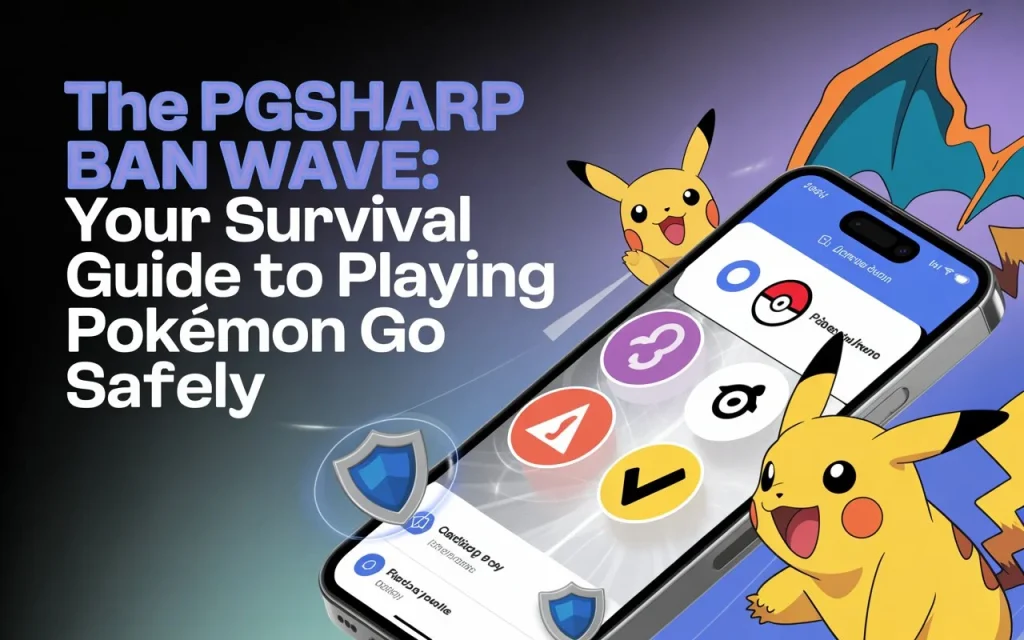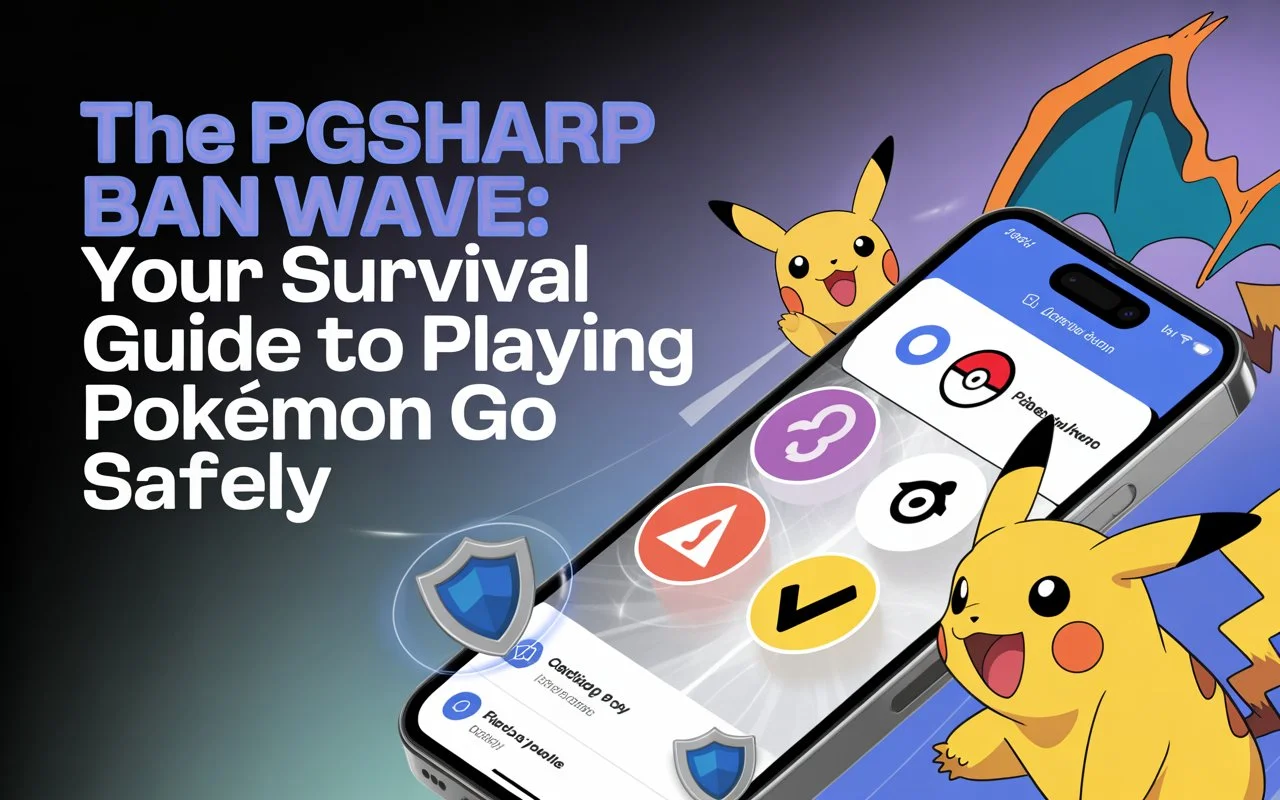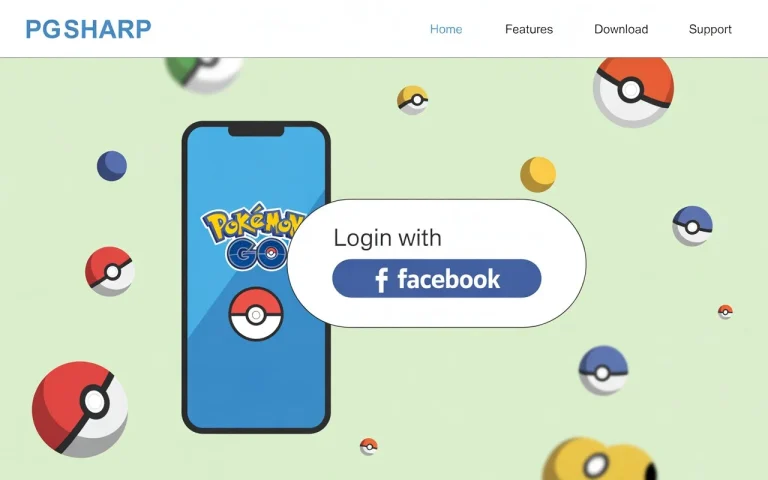PGSharp Ban Wave (2025): How to Avoid Getting Banned in Pokémon GO
The PGSharp Ban Wave: Your Survival Guide to Playing Pokémon GO Safely
Let’s be real: Pokémon GO is a blast, but who has the time or money to jet off to Tokyo for a Farfetch’d or to Sydney for a Kangaskhan? This is where handy tools like PGSharp sneak in, letting you teleport your location, auto-walk for eggs, and never miss a throw. It feels like a superpower, right? But that power comes with a massive, looming threat: the dreaded PGSharp ban wave.
If your stomach has ever dropped logging into the game, terrified you’ll see a suspension notice, you’re in good company. We’ve all been there. Niantic, the company behind Pokémon GO, is constantly cracking down on third-party apps, and PGSharp users are often the first to feel the heat. This guide isn’t about scolding you—it’s about giving you the real talk you need. We’re going to break down exactly why these ban waves happen and share a solid, practical game plan to help you fly under the radar.

So, What Exactly Is a PGSharp Ban Wave?
Think of a ban wave less as a targeted hit and more like a widespread net. Niantic doesn’t always ban players one by one. Instead, they quietly gather data over weeks or even months, and then—bam!—they issue thousands of suspensions all at once.
This is why you might use PGSharp without a hitch for ages, feeling invincible, only to wake up one morning to a 7-day ban alongside a huge crowd of other players. It’s not personal; it’s just business for Niantic. Their main goal is to keep the playing field level. When you spoof your location, you’re getting a leg up on players who are actually lacing up their shoes and walking miles to hatch eggs. Ban waves are how Niantic tries to put that genie back in the bottle.
Why Your Account Gets Flagged: Playing Detective with Niantic
To stay safe, you need to think like Niantic. Their detection systems are pretty clever, and they’re looking for a few key red flags.
- The App Itself: This is the most basic one. The PGSharp app is a modified version of the official game. Niantic runs integrity checks, and simply logging in through PGSharp is like showing up to a secure building with a fake ID. It’s a risk, right from the start.
- Impossible Travel: This is the classic spoofing mistake. If you’re catching a Pokémon in New York at lunchtime and then spinning a stop in London five minutes later, you’ve basically broken the sound barrier. Niantic’s systems spot these physics-defying jumps instantly.
- Weird App Data: The official Pokémon GO app talks to Niantic’s servers in a specific way. PGSharp sometimes struggles to perfectly mimic this “conversation,” leaving a digital fingerprint that Niantic can identify.
- Acting Like a Robot: If you’re walking in a perfectly straight line forever, never changing speed, or hitting an Excellent throw on every single capture, you’re not acting like a human. That kind of perfect, repetitive behavior is a major red flag.
Niantic’s Strike System: What Happens if You’re Caught
Niantic doesn’t immediately vaporize your account. They use a three-strike system, and it’s crucial to know what each step looks like.
- Strike 1: The Red Warning (7-Day Suspension). Consider this your official slap on the wrist. You’ll get a scary red message in-game and a one-week suspension. During this time, rare Pokémon vanish, and you’re locked out of Raids and Legendaries. This is your loud and clear wake-up call to stop.
- Strike 2: The 30-Day Suspension. If you ignore the first warning, the next strike is a full month-long lockout. That’s 30 days of missing out on events, new releases, and everything else.
- Strike 3: Permanent Ban. This is the end of the line. Your account is gone for good, with no appeals process. Every Pokémon you’ve collected, all your progress, and any money you’ve spent—poof, vanished.
Your Game Plan: How to Spoof Smarter and Safer
While there’s no such thing as a 100% safe spoofing method, you can drastically cut your risk by following a few golden rules. The main idea? Stop acting like a bot and start acting like a person.
1. The Cooldown Timer is Your New Best Friend
This is the single most important rule. A “cooldown” is a mandatory waiting period after you do something in the game (like catch a Pokémon or spin a stop) before you can teleport somewhere far away.
- Live and Breathe the Timer: PGSharp has a built-in cooldown timer—use it like your life depends on it! If you jump from Paris to Sydney, you must wait the full cooldown (usually 2 hours) before you so much as tap a PokéStop. No exceptions.
- When Unsure, Wait Longer: If you can’t remember your last action, just log out and give it the full two hours. Better safe than sorry.
2. Be a Tourist, Not a Teleporting Ghost
Don’t just bounce between continents like you have a private jet on standby. Plan your virtual trips like a real traveler.
- Stick Around: Pick a city or region and spend a day or two there. Explore, catch the local Pokémon, and do a few raids.
- Simulate Real Travel: If you “fly” from the US to Japan, maybe don’t play for 10-12 hours, as if you were on an actual flight. It’s not strictly necessary for cooldown, but it makes your behavior look more believable.
- Avoid the Usual Suspects: Hanging out 24/7 in famous spoofing hotspots like Zaragoza is a dead giveaway. Mix it up and visit some less popular places.
3. Choose Your Features Wisely
Not all PGSharp features are created equal. Some are much riskier than others.
- Pretty Safe Bets:
- Fast Catch: This is actually a manual technique in the official game, so it’s low-risk.
- Block Non-Shiny Pokémon: This happens on your device, so Niantic doesn’t see it.
- Use These Sparingly:
- Enhanced Throw/Excellent Throw: Landing a perfect throw every single time? That’s a superpower that will get you noticed. Use it occasionally, not constantly.
- 100% IV Radar: While incredibly tempting, only ever chasing perfect IV Pokémon creates an unnatural pattern.
- Just Don’t Touch This One:
- Virtual Go Plus (Auto Walk & Catch): This is full-on automation, and it’s basically waving a red flag at Niantic’s bot-detection systems. If you love your account, steer clear.
4. Paying for Premium Doesn’t Buy You Immunity
This is a huge misconception. Forking over cash for PGSharp Premium gets you more features, but it does not put a magic shield around your account. The core risk is using a modified app, and money doesn’t change that.
5. The Ultimate Safety Net: The Alt Account
This is the smartest move you can make. Never use PGSharp on your main account.
Create a separate, throwaway account—your “alt.” Use this account for all your spoofing adventures. Catch those rare regionals and shinies, then build up friendship with your main account. After 30+ days, when you’re Ultra or Best Friends, you can trade all those spoofed Pokémon to your main account for a tiny stardust cost. This way, if the hammer falls, it only hits your disposable alt account, and your prized main account lives to fight another day.
The Bottom Line: Is the Risk Worth It?
Using PGSharp is a high-stakes gamble. Ban waves are a constant reality, and Niantic is always getting better at finding cheaters. But by knowing what triggers them—the app itself, impossible travel, and robotic behavior—you can make smarter choices.
Keep it simple: respect the cooldown, act like a real person, avoid automation, and for heaven’s sake, use an alt account. Nothing is guaranteed, but by following this guide, you’re stacking the deck in your favor. Remember, in the world of Pokémon GO spoofing, the most powerful feature isn’t a joystick or a perfect throw—it’s patience.
PGSharppokemon is an expert in Pokémon Go enhancements, with a special focus on PGSharp. He provides in-depth guides and tips to help players make the most out of PGSharp for a smoother and more enjoyable gaming experience. Dedicated to staying up-to-date with the latest developments, Muhammad shares valuable insights to help both new and experienced players enhance their gameplay. Follow him for the latest updates and tricks in the world of Pokémon Go.







